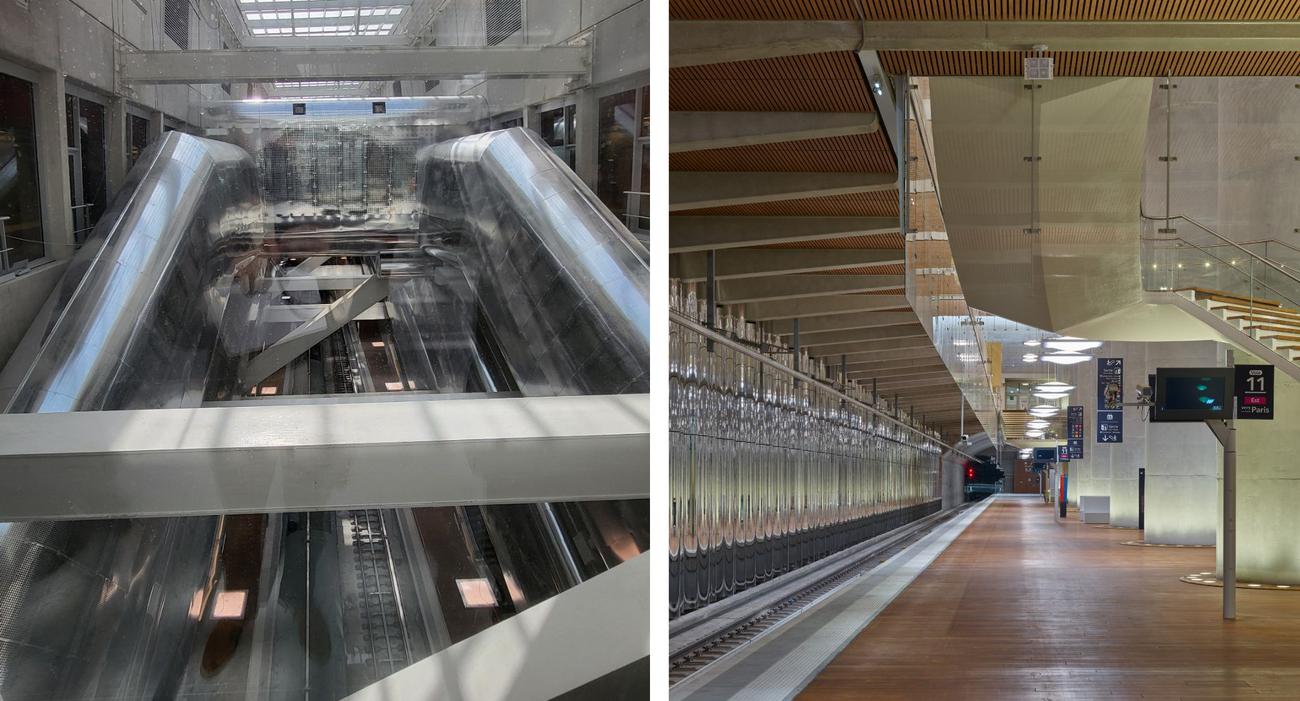We had to wait longer than expected, the Covid was there… The three new RER E stations have just opened to the public to extend the line west of the Haussman-Saint Lazare station with the Neuilly- Porte Maillot, La Défense and Nanterre-La Folie stops. And again it will only be from 10 am to 4 pm and until 8 pm at the end of November, while waiting for all the new trains. As for the rest of the line that should allow you to connect Mante la Jolie (Yvelines), will be operational only in 2026 (compared to 2024 originally planned).
Despite these disappointments, it must be recognized that these monumental achievements and in particular the two metro stations of the She wears a bathing suit and La Défense are worth it. A sign that does not deceive, you could also see the Parisian travelers with a smile on their lips and the staff of the SNCF who did not hesitate to thank the architect Jean-Marie Duthilleul who designed the place for his work. It must be said that he knows this RER line very well, since he is the one who also designed the two new stations on this same route in 1999: Haussmann-Saint Lazare and Magenta.
Bring the light
We find in these two stations new chandeliers quite similar to those used in 1999 and also white marble and wood on the floor, what is specific to these two stations is that they are not placed in a tunnel but have been dug from above : directly. from the ground for Porte Maillot and from the CNIT car park for La Défense. Result: much slimmer volumes for these two monumental achievements. “Since it was necessary to dig to reach 30 meters underground to install the line, I wanted to bring daylight up to that point, explains Jean-Marie Duthilleul. The principle is very simple but it has generated some limitations.”
That’s a little to say… An element visible directly from the outside, the Neuilly-Porte Maillot station is characterized by this strip of glass 120 meters long and 10 meters wide located right above the tracks. “It is the capital’s largest glass sidewalk”, laughs Jean-Marie Duthilleul. Because those who are not afraid of heights can jump on these 5 cm thick screen-printed slabs that let the daylight pass, as promised, right into the bowels of the station. But security demands, the works started shortly after the attack in Nice, studs were installed all around this strip of glass to prevent a crazy vehicle from being able to launch through the glass roof of the station. It was also necessary to integrate fire safety issues in the absence of a fire-resistant concrete slab above the railway tracks. This explains why the large escalators were “covered”, installed in aluminum cylinders that ensure safety and light reflection.
Temporary that lasts
And how do you explain these two very different entrances: a glass prism on the Neuilly-sur-Seine side and an elongated canvas on the Paris side? “For the canvas, it is a project that was made while walking, explains Jean-Marie Duthilleul. Basically, it was a temporary structure that was set up at one point during the construction site. Finally, we realized that the installation had real signage benefits, it was very easy to see, and that it could very well be permanent. “little” sister of La Défense-Grande Arche.
This time round lines and curved lines are in focus. A link between the two stations: the same chandeliers (only the setting is different) but also the white Carrara marble on the floor, whose virtues have been validated by the architect after 25 years of use at Haussmann6Saint-Lazare and also of the use of wood. on the quays. “I wanted this very domestic and warm material that contrasts with concrete and metal,” emphasizes Jean-Marie Duthilleul. Even here, we had to battle with the fire safety constraints to impose these bamboo slats. On the other hand, a short focus on the construction site of the side of La Défense had shown that the parquet was particularly resistant.
In this second station, in the absence of daylight, we benefit from even more generous volumes. What stands out are these 20 raw concrete columns of 2.44 meters in diameter that support the CNIT which is located right above. The rounded shapes are also found in the white shapes that adorn the walls of the technical rooms with Corian. Finally, a friendly and playful touch in a station where the platform is central, the architect wanted to prevent travelers from finding themselves facing a dark and sinister wall. That is why we find in front of the platforms a strip of metal that makes waves like distorted mirrors, constantly creating movement and animation.

